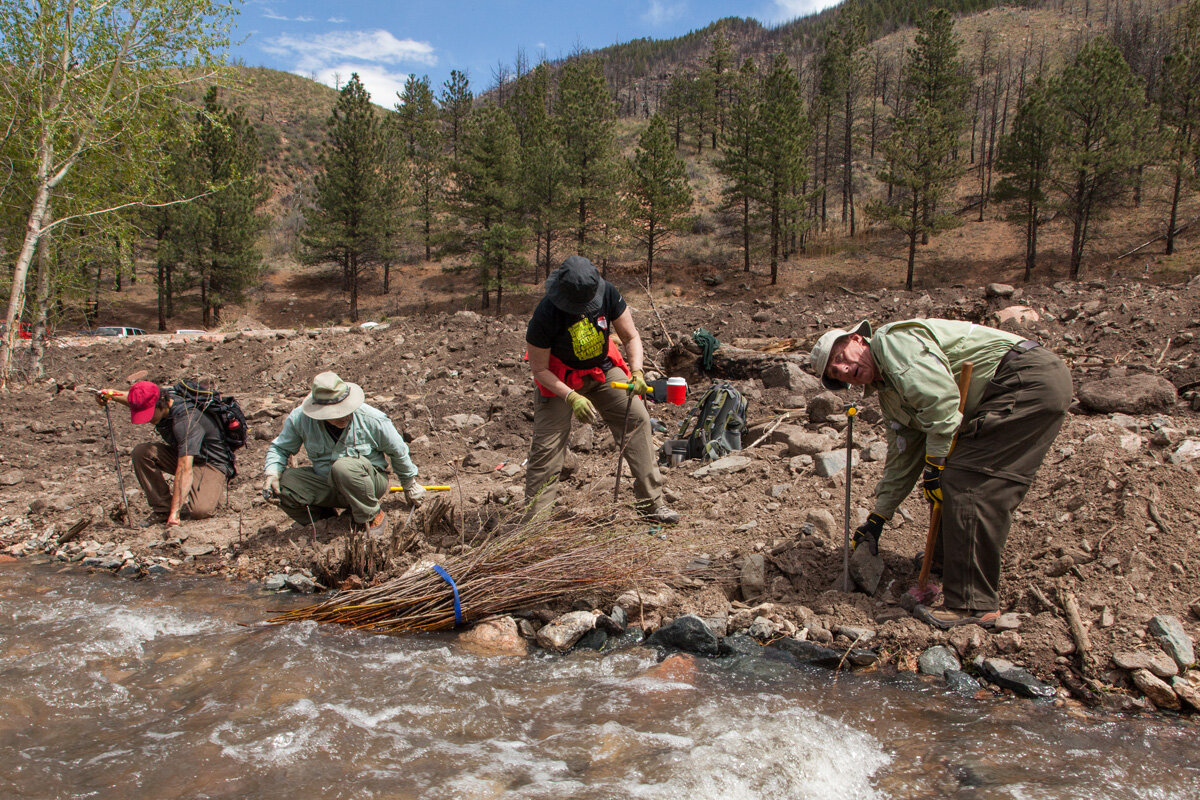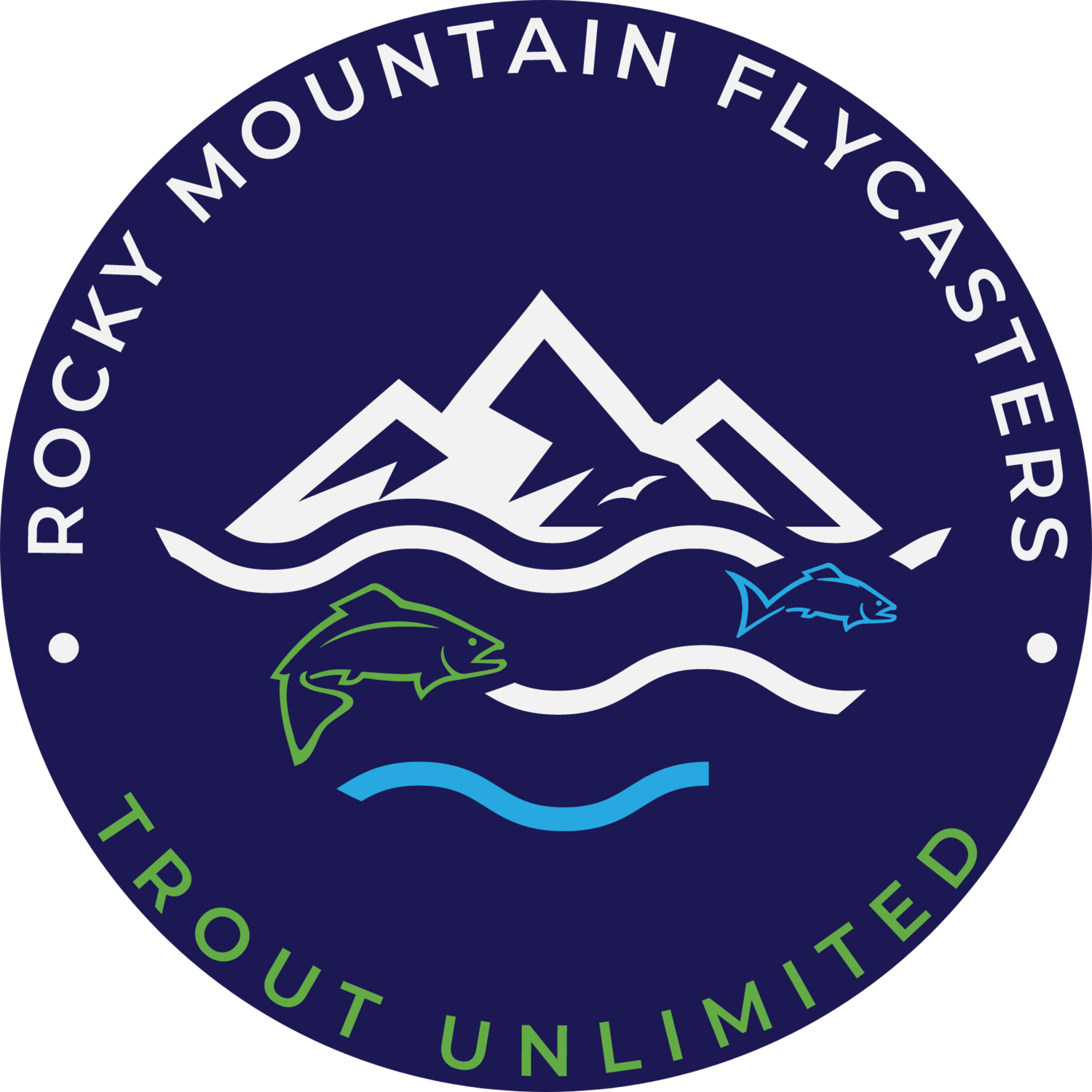
State and Federal Agency Support
Fish Sampling and Surveys
Electroshocking Surveys – On an annual basis, Rocky Mountain Flycasters is called on to provide volunteer support to Colorado Parks and Wildlife (CPW), Us Forest Service (USFS) and US Fish and Wildlife (USFW) for the purpose of collecting real-time information regarding fish populations in streams. While the process of electroshocking is not harmful to fish, it requires a lot of human resources to accomplish. Volunteer opportunities for these sessions are posted on our events calendar so be sure to check it on a regular basis.
Zimmerman Lake Creel Survey
Starting in 2014, Zimmerman Lake has been stocked annually with 900 to 1,000 age-1 Greenback Cutthroat Trout (Bear Creek). The population represents an important brood source, meaning that eggs are collected and fertilized annually to support stocking in other recovery projects, and to perpetuate the Zimmerman and Leadville National Fish Hatchery broodstocks. Prior to stocking the first-year class of Bear Creek Greenbacks in 2014, Colorado Parks and Wildlife (CPW) and US Fish and Wildlife established an agreement that CPW would monitor catch and release angling, to protect CPW’s ability to manage the population for catch and release fishing. Thus, a creel study began in 2015 to measure angling use at Zimmerman Lake. The Creel Study utilizes a combination of creel cards and a motion detecting creel camera to quantify angling use. The creel cards are a voluntary questionnaire to evaluate angling effort, catch, and other human dimension parameters. The creel camera provides an estimate of the actual number of anglers that visit Zimmerman in a season, which also enables the ability to estimate participation in the creel card survey. The camera captures a coarse image of everyone who hikes to the lake, providing a date and time stamp for each image. CPW technicians then sort through all the images to determine how many visitors were anglers, and when they arrived and left. This combined approach enables an annual evaluation of trends in angling pressure and catch. Rocky Mountain Flycasters Volunteers are assisting with the creel card survey portion of the creel study at Zimmerman Lake. Our primary responsibility is to keep new cards stocked at the kiosk and retrieve and collect completed cards. This volunteer effort begins as ice comes off the lake (mid-June) and runs through the fall. To maintain the study, the kiosk needs to be serviced monthly.
Habitat Restoration
Past habitat restoration projects include Skin Gulch and Eagle’s Nest.
Macro Invertebrates Study
In collaboration with the Big Thompson Watershed Coalition (BTWC) and Colorado Parks and Wildlife (CPW), Rocky Mountain Flycasters will participate in a Benthic Macro Invertebrate (BMI) Sampling on the lower Big Thompson. The sampling will help determine post-flood and post-recovery and restoration work effects on the macro invertebrate population. Specifically, we want to find how the river’s health is changing as these recovery and restoration projects are completed. Sampling and tracking BMI at key restoration sites will be used to gauge and monitor river health over time. As experienced fly fishermen know, a trout’s diet consists of anything that “drifts by,” with BMI making up a large part of this food source. Using and monitoring BMI overtime provides a key surrogate to understanding river health from the trout’s perspective. The BTWC has tentatively identified 14 different sampling locations. We have requested, and the BTWC agrees, this sampling should be coordinated with CPW’s BMI sampling efforts on the river. This includes using the same sampling protocol as CPW and possibly picking up two additional sites, for a total of 16 sites, that CPW does not have the resources to sample. The samples collected will be sent to the same laboratory for detailed BMI identification, further providing consistency in data collected throughout the river. Volunteer opportunities will exist as this sampling effort gets underway. If you have interest, please contact our Conversation Chair.




